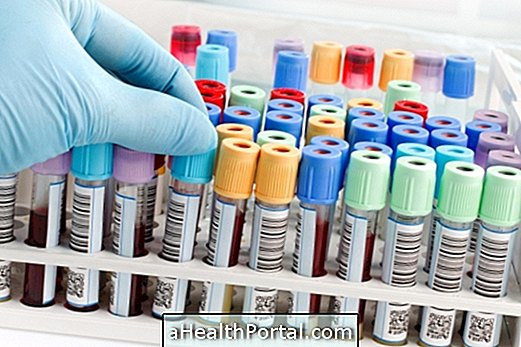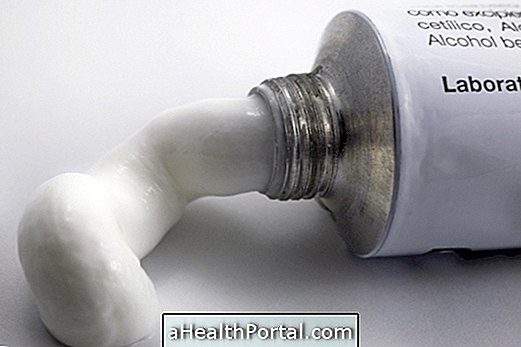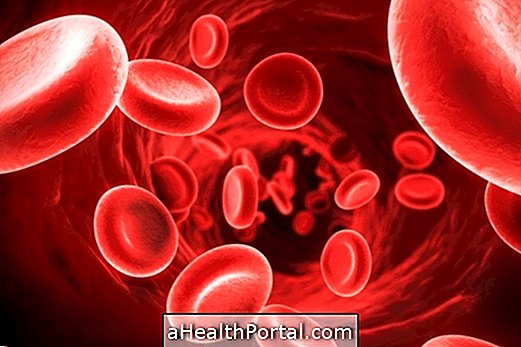Prolactin is a hormone that stimulates the mammary glands to produce breast milk during pregnancy and during breastfeeding. Therefore, high blood prolactin may be a sign of pregnancy and a pregnancy test may be indicated. Out of pregnancy, prolactin is also responsible for regulating other hormones by participating in ovulation and menstruation.
However, in some cases there may be increased prolactin in the blood and the causes may be the use of remedies, hypothyroidism or tumor that may be benign or malignant in the gland where this hormone is produced, the pituitary gland. This change is more common in young women, aged 25-34, but men may also be affected.
Symptoms of high prolactin
In case of high prolactin in women, symptoms such as:
- Delay or absence of menstruation for more than 35 days in each cycle;
- Production of breast milk, even without being pregnant or having recently had a baby;
- Decreased libido;
- Infertility, having difficulty getting pregnant for long months or years;
- There may be osteoporosis, with a 25% decrease in bone mass in the spine.
In men the increase in prolactin can cause symptoms such as:
- Milk out of the man's breasts;
- Decreased libido;
- Erectile dysfunction;
- Decreased production of testosterone;
- Decreased production of spermatozoa;
- Infertility;
- Breast augmentation;
- Osteoporosis.
Other symptoms commonly found in both woman and man are headache and vision changes. Learn all about the increase of prolactin in man.

Causes of high prolactin
High prolactin may be related to:
- Pregnancy or breastfeeding;
- Intense physical exercise;
- Accumulated sleep and psychological stress;
- Breast stimulation;
- Polycystic ovarian syndrome;
- Use of antidepressant medicines or medicines for seizure, anesthesia, allergy, high blood pressure, estrogens, nausea;
- Primary hypothyroidism;
- Surgery in the head or chest or trauma at these sites;
- Addison's disease or diseases such as acromegaly, hypophysitis or adenoma;
- Tumor in the brain;
- Exposure to radiation in the head region.
In women, in about 30% of cases of prolactin increase, unrelated to pregnancy or breastfeeding, it is due to Polycystic Ovarian Syndrome, or due to the presence of a small tumor of less than 10 mm in diameter, which very rarely increases of size and that can not always be seen in a MRI. Learn more about Polycystic Ovarian Syndrome.
How to Lower Prolactin
Treatment to normalize prolactin values is indicated when symptoms are unpleasant and impair one's life.
In cases where the cause is drug use, talk to your doctor to see if you can switch to another drug that does not interfere with prolactin production.
It is also important to start treatment when the couple has the desire to become pregnant, but it has not been possible due to infertility. Certain couples are able to conceive with values of 50 to 60 ng / mL, but these values may need to be lowered further with the use of drugs such as Dostinex or Parlodel, for example because high prolactin increases the risk of miscarriage.
When the cause is a tumor, treatment with medicines such as Cabergoline and Bromocriptine, which normally reduces its size, should be performed in approximately 2 years and in rare cases it may be necessary to have surgery, and sometimes radiotherapy, that it is only indicated for aggressive or malignant tumors.

Reference values
In women, out of pregnancy and breastfeeding, it is normal for prolactin to be below 25 ng / mL and in man the normal value is below 20 ng / mL. However, the values may vary according to the laboratory in which it is performed and with the method of analysis, so it is important to pay attention to the reference values indicated in the test result.
When prolactin is above 100 ng / mL, the most common cause is the use of drugs or the presence of micro-tumors, and when they are above 250 ng / mL, it is probably a larger tumor.
If a tumor is suspected, the doctor may choose to repeat the examination of the prolactin every 6 months for 2 years, then take only 1 examination per year to check for any changes.
How to prepare for the exam
To take the prolactin test more correctly, you should follow some precautions such as taking blood, at least 1 hour after waking up and having breakfast.
Normally, only 1 test is needed to identify changes in prolactin, but when the result is between 20 and 60 ng / mL, your doctor may find it safer to do another test to confirm the result.


























